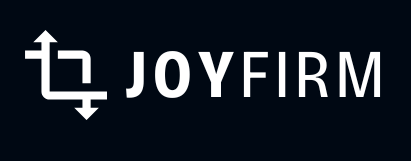Lead Generation 101: Your Step-by-Step Guide
In today’s fast-paced digital world, lead generation is the lifeblood of business growth. With AI and automation transforming the marketing landscape, businesses now have smarter, more efficient ways to attract and convert potential customers.
If you want to increase sales, enhance productivity, and maximize ROI, mastering lead generation strategies is crucial. This guide will take you through the fundamentals of lead gen, the evolution of traditional vs. modern approaches, and how AI-driven automation is shaping the future of lead generation success.
What is Lead Generation?
Understanding Lead Generation
Lead generation is the process of identifying, attracting, and nurturing potential customers who are interested in your product or service. The ultimate goal? Convert them into paying customers.
Why Lead Generation is Important in 2024
With increasing competition and rising customer expectations, businesses can’t rely on cold calls and outdated sales tactics anymore. The key to success lies in:
✅ Targeting the right audience
✅ Building trust and engagement
✅ Using AI and automation to personalize outreach
A strong lead generation strategy ensures that businesses continuously fill their sales pipeline with high-quality prospects—leading to consistent growth and higher revenue.
Understanding the Leads in Lead Generation
What Are Leads?
A lead is a potential customer who has shown interest in your product or service. But not all leads are the same. They fall into different categories:
🔹 Marketing Qualified Leads (MQLs): Leads that have engaged with marketing efforts (e.g., downloading an eBook, signing up for a webinar) but are not yet ready to buy.
🔹 Sales Qualified Leads (SQLs): Leads that have been vetted by the sales team and are ready for direct engagement.
🔹 Pay-Per-Lead (PPL): A lead acquired through paid marketing efforts, such as PPC campaigns, affiliate programs, or lead-buying platforms.
Knowing the difference between these leads helps businesses nurture them effectively and guide them through the sales funnel.
Dive Into Lead Gen: Traditional Vs. Modern Approaches
Traditional Lead Generation Methods
Before the internet, businesses relied on:
Cold calling 📞
Print ads & billboards 📰
Direct mail campaigns 📩
Trade shows & networking events
While these methods still work, they are time-consuming, expensive, and harder to scale.
Modern Lead Generation: The Digital Revolution
The rise of AI, automation, and digital marketing has revolutionized lead generation with:
✅ Inbound Marketing: Blogs, SEO, email marketing, and social media to attract leads naturally.
✅ Paid Advertising: Facebook Ads, Google Ads, and LinkedIn Ads for highly targeted outreach.
✅ AI & Automation: Intelligent chatbots, predictive lead scoring, and AI-powered prospecting tools.
Today, businesses need a data-driven, tech-powered approach to maximize lead quality and conversion rates.
AI Leads: Exploring the Future of Lead Generation
How AI is Changing Lead Gen
AI eliminates guesswork in lead generation by analyzing vast amounts of customer data to:
✔ Identify the right leads faster
✔ Personalize messaging for higher engagement
✔ Automate repetitive tasks
How AI Enhances Lead Generation Efficiency
🔹 AI Chatbots & Virtual Assistants – Tools like Drift, Intercom, and ChatGPT qualify leads instantly.
🔹 Predictive Analytics – AI scores leads based on behavior, ensuring sales teams focus on high-value prospects.
🔹 Personalized Email Sequences – AI-driven email platforms like Seventh Sense improve open and conversion rates.
By leveraging AI-driven lead generation, businesses can increase efficiency, reduce costs, and scale faster.
Lead Automation: Driving Efficiency and Productivity
What is Lead Automation?
Lead automation uses AI, CRM systems, and workflow automation to capture, qualify, and nurture leads without manual intervention.
Key Benefits of Lead Automation
💡 Faster Response Times – Automated follow-ups ensure leads don’t go cold.
💡 Better Lead Nurturing – AI-powered emails & chatbots engage prospects at the right time.
💡 Higher Sales Productivity – Sales teams can focus on closing deals, not manual tasks.
How to Implement Lead Automation
✔ Use AI-powered prospecting tools (Apollo.io, ZoomInfo, Clearbit).
✔ Automate email sequences with Mailshake or HubSpot.
✔ Set up behavior-based lead scoring in your CRM.
With lead automation, businesses generate and convert more leads with less effort, making it a must-have for modern marketing teams.
The Art of Lead Generation: Strategies for 2024 and Beyond
According to Forbes, the best lead generation strategies for 2024 and beyond include:
🔹 Hyper-Personalization – AI-powered insights allow businesses to deliver customized experiences to prospects.
🔹 Interactive Content – Engaging lead magnets like quizzes, calculators, and video marketing.
🔹 Omnichannel Lead Generation – Combining email, LinkedIn, SEO, and paid ads for maximum reach.
🔹 AI-Powered Sales Assistants – Chatbots and AI lead scoring for real-time lead qualification.
Staying ahead of these emerging trends will be key to sustained business growth.
Lead Gen Tools: A Sprinkle of Tech Magic
To streamline and maximize lead generation, here are the top tools businesses should consider:
1. AI-Powered Lead Generation Tools
Apollo.io & ZoomInfo – AI-driven B2B prospecting platforms.
Seventh Sense – AI-powered email personalization for higher conversions.
Drift & Intercom – Conversational AI chatbots that engage and qualify leads instantly.
2. CRM & Marketing Automation Tools
HubSpot – All-in-one CRM & marketing automation solution.
Salesforce – Advanced CRM with AI-powered analytics.
ActiveCampaign – Automation for email, SMS, and sales pipelines.
3. SEO & Content Marketing Tools
Ahrefs & SEMrush – For SEO-driven lead generation.
Canva & StoryBlocks – Create high-quality visuals to boost engagement.
Investing in the right lead generation tools can transform marketing efforts and boost sales efficiency.
Conclusion: Keeping Up in the Lead Generation Game
In 2024 and beyond, AI, automation, and digital strategies will dominate lead generation. Businesses that leverage:
✅ AI-powered automation
✅ Personalized marketing
✅ Data-driven decision-making
…will stay ahead of the competition and drive consistent growth.
By adopting smart lead generation techniques, your business can capture high-quality leads, boost engagement, and skyrocket revenue.
The future of lead generation is here—are you ready to automate and scale?
